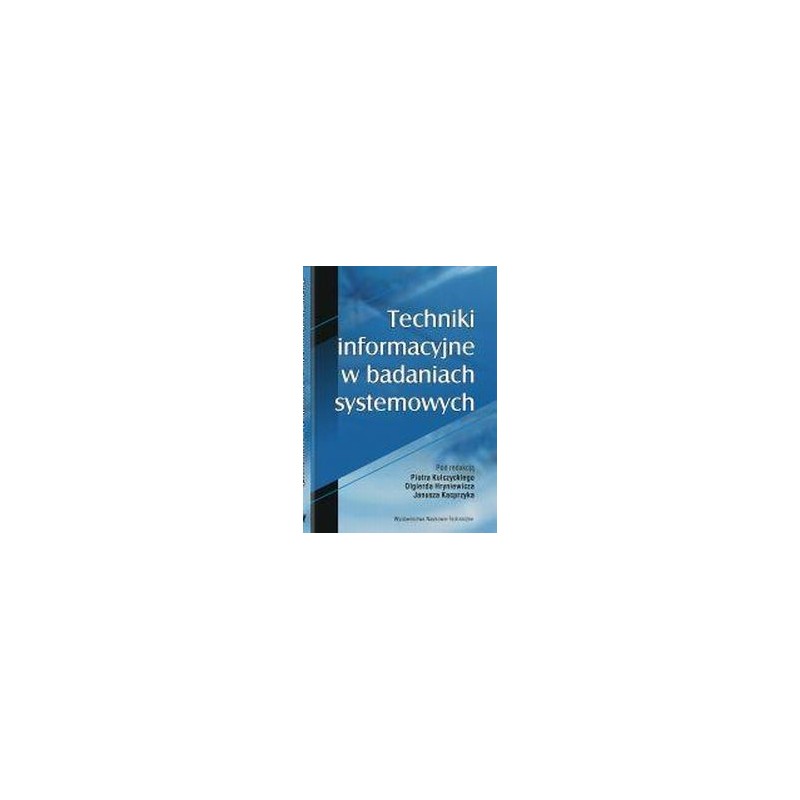- Out-of-Stock



Table of Contents
Part I. System modeling
1. System modeling as a way to organize knowledge
Andrzej P. Wierzbicki
2. Uncertain variables and their applications in uncertain systems
Zdzisław Bubnicki
3. Methodology for knowledge-based development management based on risk
Roman Kulikowski
4. Nuclear estimators in the field of systemic research
Piotr Kulczycki
Part II. Information analysis and processing
5. Statistical learning systems
Jacek Koronacki
6. Fuzzy-neural methods for analysis and processing
data
Danuta Rutkowska
7. Processing granular information in the process of constructing systems
interactive
Witold Pedrycz
Part III. Supporting decisions
8. Approximate collection in decision support
Zdzisław Pawlak, Roman Słowiński
9. Statistical decisions in system analysis
Olgierd Hryniewicz
10. Blurred dynamic programming
Janusz Kacprzyk
11. Bayesian networks in making decisions
Mieczysław Alojzy Kłopotek
12. The approach of ordinal regression to multi-criteria ordering
decision variants
Roman Słowiński
Part IV. Usage
13. Systematic approach to selected issues of telemedicine
Ryszard Tadeusiewicz
14. Flexible valuation of network services
Krzysztof Malinowski
15. Analytical methods and artificial intelligence in damage diagnostics
Józef Korbicz
16. Applications of immunological algorithms in exploratory analysis
data
Sławomir T. Wierzchoń
No product available!
Single-board computer with Samsung S3C2440 processor (ARM9) with 7 inch LCD and touchpanel
No product available!
Printed circuit board and programmed layout for RD Lidia 80 Digital. AVT5527 A +
No product available!
Polyester braid for organizing numerous cables into bundles. Z28416
No product available!
No product available!
Male terminal block, angled, 2-pin. Pitch 3.81mm. Height 7mm. 15EDGRC
No product available!
No product available!
No product available!
No product available!
EPCglobal Gen2 Ultra-Thin Adhesive RFID Tags Compatible with Simultaneous RFID Reader. SparkFun WRL-20226
No product available!
No product available!
No product available!
No product available!
Set of 9 hex keys with a ball. z28414
No product available!
No product available!
No product available!

